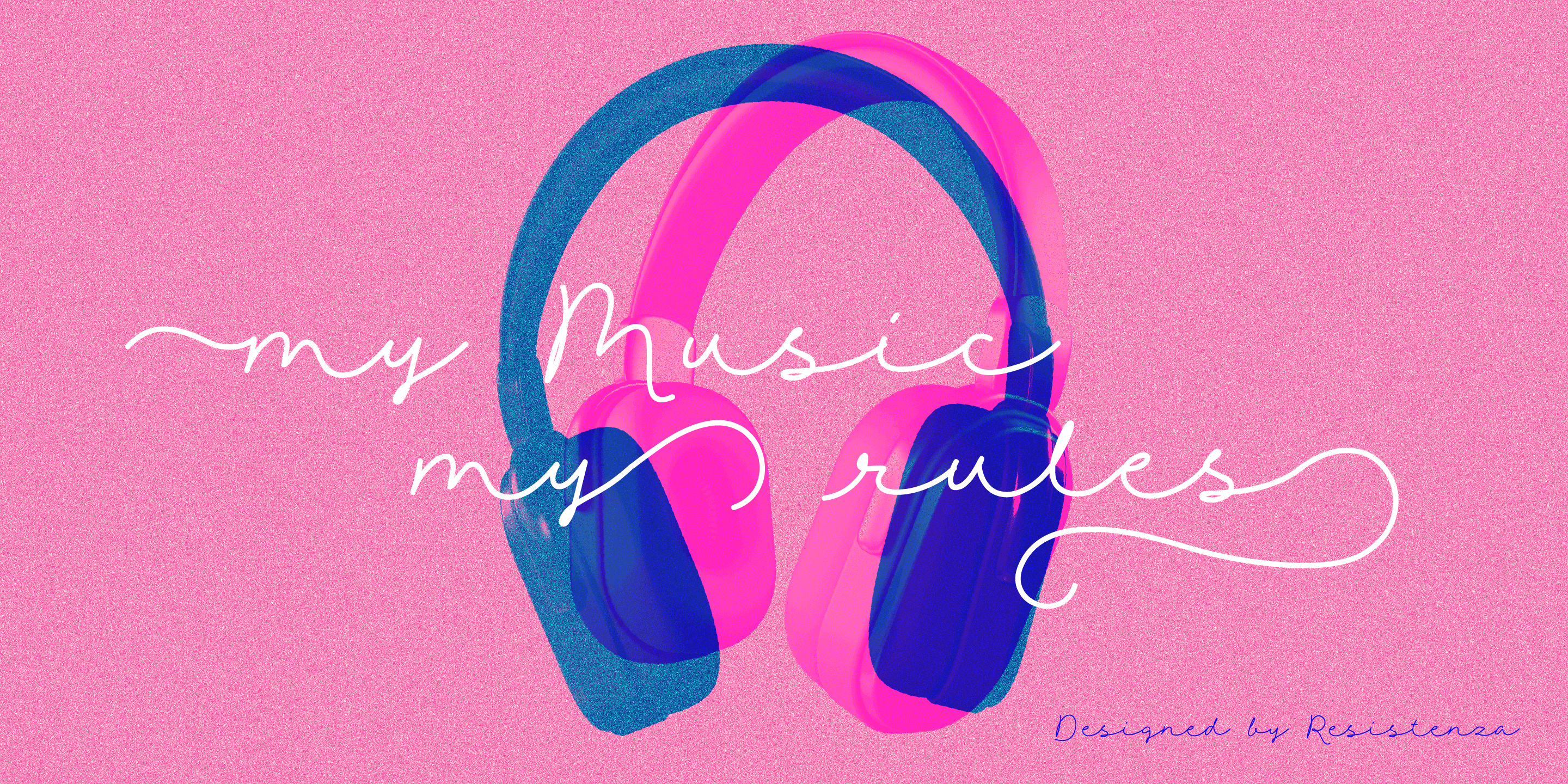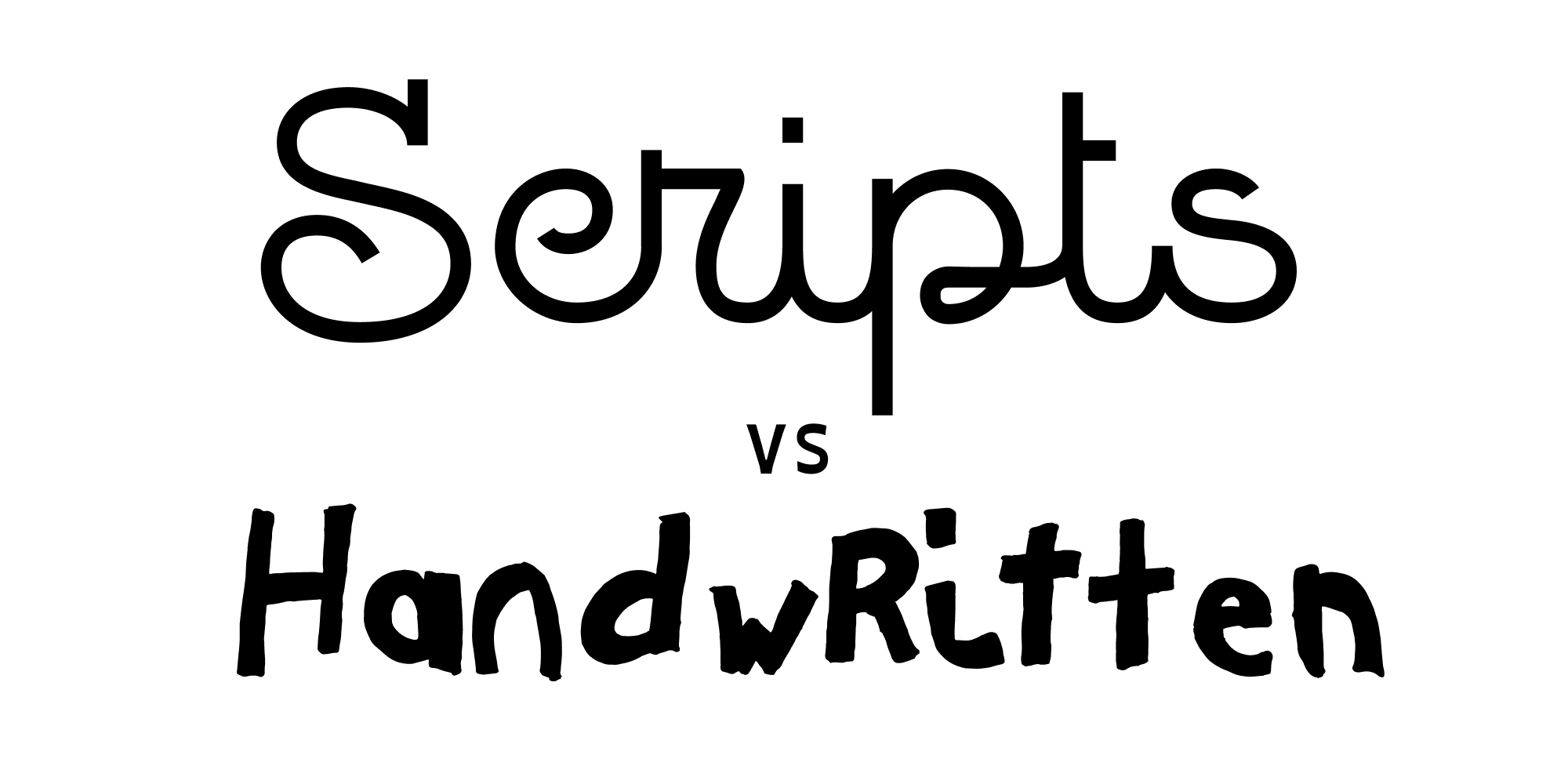Understanding the Differences
Script and handwritten fonts are a powerful way to infuse personality, warmth, and a human touch into your designs. In this post, we’ll break down the key differences between the two, and help you decide when to use each to elevate your creative work.

What Is a Script Font?
Script fonts are designed to mimic the fluid, elegant movement of traditional handwriting. They’re drawn with graceful curves, often inspired by calligraphy or penmanship, and usually feature connected or semi-connected letters. Script fonts range in mood — from refined and sophisticated to playful and relaxed — giving designers flexibility to match the tone of a project.
Common traits include rhythmic stroke contrast, organic variation, and smooth transitions between characters. Some styles even incorporate brush or ink textures for added personality. Whether formal or casual, script fonts are great for expressing emotion and artistry in typography.
What Is a Handwritten Font?
Handwritten fonts are based directly on hand-drawn lettering styles, often replicating the natural quirks and inconsistencies of real handwriting. Unlike script fonts, which are typically more polished and stylized, handwritten fonts celebrate imperfection — making them feel raw, approachable, and authentic.
They often feature uneven baselines, irregular spacing, or playful curves — characteristics that add charm and individuality. These fonts are perfect when you want your design to feel personal and handcrafted.
Script vs. Handwritten Fonts: What's the Difference?
While both styles are inspired by handwriting, they serve slightly different purposes and aesthetics:
- Script Fonts: Designed for fluidity and elegance. They emphasize connected strokes and balanced shapes, giving a more refined and harmonious feel.
- Handwritten Fonts: Looser, more spontaneous. They mirror real human handwriting with natural variations, making them feel intimate and expressive.
Why Designers Love Them
Script and handwritten fonts add emotional depth to typography. Their hand-crafted look makes them ideal for branding, invitations, packaging, editorial, and any design that aims to feel sincere or artisanal. By embracing natural variation, they establish a connection with the viewer — something clean sans-serifs rarely do.
What About Cursive Fonts?
Cursive fonts are a subcategory of handwriting styles where the letters are connected in a flowing motion, often inspired by 16th-century penmanship. These fonts can overlap with script styles, but they focus specifically on fluid, joined characters that replicate how we write in cursive. They’re great for adding an elegant, continuous rhythm to a line of text.
Why Use Script or Handwritten Fonts?
These fonts give a human voice to your design. Whether you're crafting a heartfelt note, a playful brand, or a nostalgic piece of packaging, script and handwritten styles offer authenticity, emotion, and style in one stroke.
They’re especially effective for:
- Logo design that needs to feel unique or expressive
- Wedding or event invitations with a personal tone
- Editorial spreads or quotes that benefit from a hand-touched aesthetic
- Packaging that highlights craftsmanship or warmth
Explore Our Handwritten Collection
At Resistenza Type, we’ve crafted a wide range of handwritten fonts to suit any mood or message. One standout is Dream Away — a textured script font available in six expressive weights. It’s the perfect choice for projects that call for charm, fluidity, and a hand-made feel.
Need inspiration? Browse our collection and see how other designers are using handwritten fonts in real-world branding, packaging, and layouts. Let your typography speak with soul.
